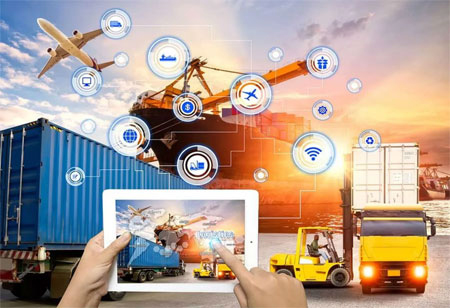THANK YOU FOR SUBSCRIBING
THANK YOU FOR SUBSCRIBING

By
Logistics Transportation Review | Wednesday, December 04, 2019
Stay ahead of the industry with exclusive feature stories on the top companies, expert insights and the latest news delivered straight to your inbox. Subscribe today.
The additional speed and connectivity offered by 5G have the aptitude to transfer data safely within milliseconds.
FREMONT, CA: Even though ports have adopted automation more slowly than comparable sectors, distinctly mining and warehousing, the pace is now starting to expedite. With the industry shifting to work in tandem with technology—from the increasing the deployment of drones to administer terminal operations, to the progression of cloud connectivity within smart ports, 2019 has been a period of real progress.
Check Out This: Top Mining Engineering Services Companies
Below are vital trends of the year:
5G Networks
With the development of fast and vast 5G ecosystem and its ensuring levels of automation, terminals and ports are eager to take the benefit of technological penetration. One of Europe’s ports has tested 5G technology as it prepares itself to become a hub for next-generation industrial mobile communications. As per the trials conducted by the port, the technology will support engineers on-site to monitor and enhance construction planning.
The additional speed and connectivity offered by 5G have the aptitude to transfer data safely within milliseconds. Furthermore, it also supports the digital transformation of the container shipping industry, logistics companies, and linking ports securely as the foundation for a more intelligent supply chain.
The rise of 5G has made way for other technologies to emerge and develop with the fast and flexible network able to function in convergence along with cellular IoT. The cellular IoT is a way of connecting physical objects—for terminals and ports. It can be employed so that port equipment can transmit data through sensor technology for more automated, independent, and efficient operations.
Major companies are already investing in the shift toward sensors, a movement that has applications for the container shipping sector beyond the daily operations of ports and terminals. Furthermore, one shipping company committed to innovation has tested a container tracking management system that employs optical sensors to detect changes in conditions, including whether or not an unauthorized party opens the container.
Eventually, ports and terminals will be focusing on the amount of information that smart sensors are capable of generating, particularly those that wish to develop new platforms and services to take advantage of the data.
I agree We use cookies on this website to enhance your user experience. By clicking any link on this page you are giving your consent for us to set cookies. More info





